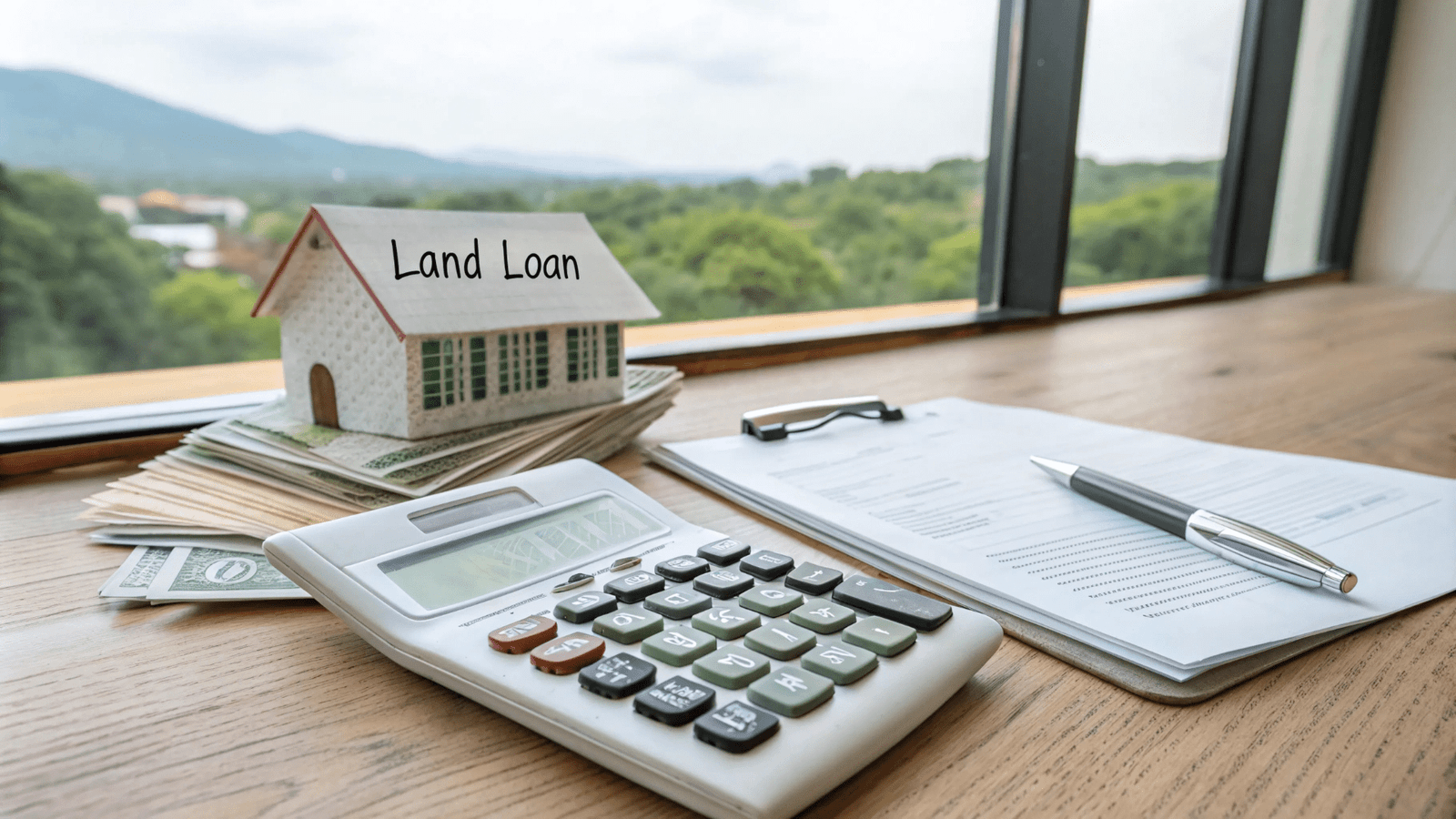When you’re thinking about buying land, one important step is figuring out how much money you need for a land loan down payment. This initial payment is a significant part of the buying process, as it directly impacts how much you’ll need to borrow and your future monthly payments. The amount required for a land loan down payment can vary depending on factors such as the type of land you’re purchasing—whether it’s raw, improved, or intended for residential development—and the lender’s specific requirements.
Understanding how much to budget for your down payment is crucial for financial planning. In this guide, we’ll explore what land loan down payments are, how much you might need, and tips for budgeting effectively. Whether you’re a first-time buyer or looking to invest, having a clear picture of land loan down payment requirements will help you make informed and confident financial decisions.
Table of Contents
ToggleHow Much Down Payment Do I Need for a Land Loan?
Unlike traditional home loans, land loans typically require higher down payments, ranging anywhere from 20% to 50% of the land’s purchase price. The exact amount depends on whether the land is raw, improved, or ready for residential development. Lenders consider raw land riskier, often requiring larger upfront investment, while improved or build-ready land might qualify for lower percentages.
What’s the Typical Budget Required for a Land Loan Down Payment?
Here are quick benchmarks to guide your budgeting:
-
- Raw land (no utilities or roads): Expect 30–50% down.
- Improved land (with utilities/access): Typically 20–30% down.
- Residential-ready plots (zoned and permitted): Often 15–25%, depending on lender flexibility and buyer qualifications.
Keep in mind that land loans generally have stricter approval criteria than traditional mortgages.
Key Factors That Influence Your Down Payment
Several critical variables affect how much you’ll need upfront:
1. Your Credit Score
A high credit score improves your chances of securing a loan with more favorable terms:
-
- 740 or higher: May qualify for the lowest down payment requirements.
- 700–739: Typically moderate down payments.
- 640–699: Higher down payment expected.
- Below 640: Limited options; seller financing might be more feasible.
2. Intended Land Use
-
- Immediate development (e.g., building a home soon): Lower down payment due to lender confidence.
- Long-term investment: Lenders may require more upfront since no income-generating activity is planned.
- Agricultural or commercial use: May qualify for specialized loans with unique terms.
3. Location and Zoning
Where the land is located plays a big role:
-
- Rural properties: You might qualify for USDA Rural Development Loans, which could mean minimal to zero down, depending on eligibility.
- Urban/suburban areas: Higher land prices often mean larger down payments, but financing options may be more competitive.
How Can I Estimate the Down Payment Needed When Buying Land?
To estimate your land loan down payment, start with a simple formula:
Estimated Down Payment = Purchase Price × Down Payment Percentage
If you’re buying a $100,000 parcel of improved land, and your lender requires 25% down, you’ll need to budget $25,000 upfront.
Ways to Prepare for Your Down Payment
Planning ahead makes all the difference. Here are strategies to help you build a strong financial foundation:
-
- Boost your credit score: Pay down debt, avoid new credit inquiries, and correct credit report errors.
- Automate savings: Contribute to a dedicated savings account regularly.
- Leverage home equity: Use a HELOC if you already own property.
- Consider investment liquidation: If market conditions are right, selling stocks can help fund the down payment.
- Explore gift options: Some lenders accept family gifts as part of your down payment.
- Borrow from retirement: Some 401(k)/IRA plans allow borrowing for land purchases—check terms carefully.
Alternative Financing Paths If You’re Short on Cash
If traditional loans require more down than you can afford, consider these alternatives:
-
- Seller financing: Often negotiable terms and may reduce the down payment.
- USDA loans: Designed for eligible rural land purchases and may offer zero-down options.
- Owner-occupied land loans: Better terms for those planning to live on the property.
Pro Tip: Start Early
Begin preparing your down payment strategy 12–18 months in advance. This gives you time to improve your credit, build savings, and explore financing options without stress.
Final Thoughts
When buying land, your down payment significantly influences what you can afford and how easily you’ll secure financing. By understanding the different types of land loans, factors that affect lender requirements, and how to estimate your needs, you’ll position yourself for a smoother, smarter purchase. With the right preparation, owning land can be more accessible than you think.

